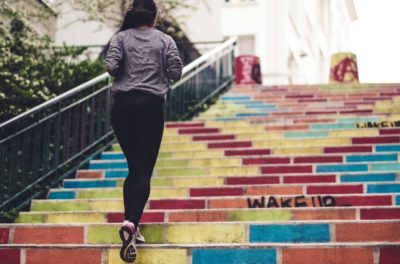10,000 steps a day? And the rest.
When it comes to daily exercise goals, anyone with a FitBit knows that 10,000 steps a day is the holy grail. But according to a joint review by Public Health England and the Centre for Aging Better, this target is just the start of the story. People are certainly doing more exercise – particularly aerobic exercise – than they were in the past, but they’re doing it at the expense of balance and strength.

Once we pass the age of 20, we lose around 1% of our muscle mass every year. And that’s not all. We also start to lose our joint position sense/proprioception and balance into the bargain. That’s why standard aerobic exercise alone is not enough, especially when it comes to older patients. So what else should we be doing?
Rather than focusing on aerobic exercise alone, we should be adding in regular strengthening and balancing exercises to our training regimes, such as resistance training, racquet sports and Nordic walking. This is particularly important as the risk of falling increases as we get older. While a 2016 study showed that just 12% of people over the age of 65 do these complementary exercises, they have a number of clear benefits. First, they can help slow the rate at which we lose muscle mass – and potentially even reverse it. Second, the loading can increase your bone strength and reduce the risk of fracture in the event of a fall. And finally, balancing exercises can help reduce the risk of a fall in the first place.
